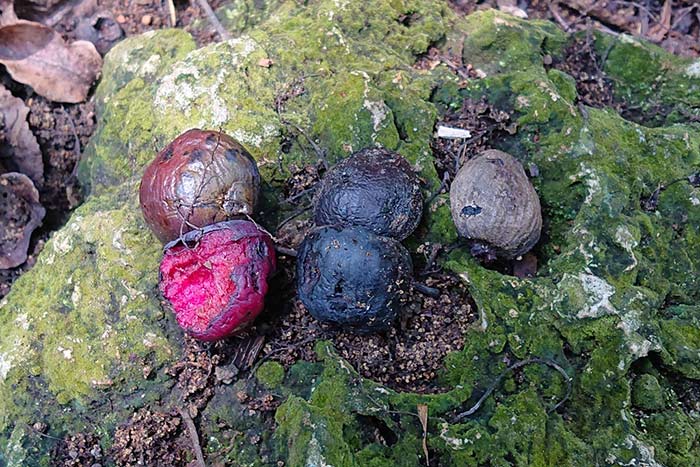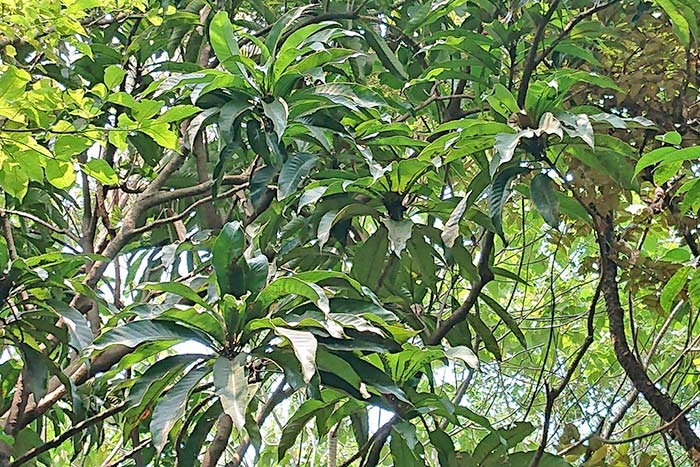Semecarpus gigantifolia
The giant-leaved marking-nut is an evergreen tree. Its Chinese name comes from the fact that it is commonly found in Taitung, but it is not unique to Taitung. It is also found in Hualien, the coast of Taitung, to Orchid Island, Green Island, and the Hengchun Peninsula, and even in the Philippines. In the Botanical Garden, it is planted along the trails of the Orchid Island Area near the Littoral Forest Area, where its majestic and towering form is highly striking.
The large, dark green leaves of the giant-leaved marking-nut can grow up to 30 centimeters in length, clustering at the tips of branches, and possess exceptionally high ornamental value. Additionally, its sturdy trunk, spreading branches, and ability to form a wide canopy, coupled with its tolerance for air pollution, make it suitable for urban environments. As a result, it is considered an excellent tree species for gardens or roadside landscaping, effectively increasing urban green coverage and improving the urban microclimate. It also has good wind resistance, making it suitable for coastal area greening and windbreak applications.
The fruit of the giant-leaved marking-nut has a unique shape, divided into two sections. The upper section is an oval fruit containing a single seed. The lower section is an enlarged hypocarp that changes color from green to yellow to red to purple-black as it develops.
Although the giant-leaved marking-nut has many advantages in landscape applications, like other plants in the Anacardiaceae family, its sap contains allergenic substances that may cause skin redness, itching, blisters, and other allergic symptoms upon contact. In severe cases, it may even trigger systemic reactions. When admiring the majestic form and lush green leaves of the giant-leaved marking-nut, please maintain a safe distance. As long as you do not pick its leaves, harvest its flowers or fruits, or scratch its bark, even if the sap of the giant-leaved marking-nut is highly toxic, you will not be poisoned as long as you avoid contact.

